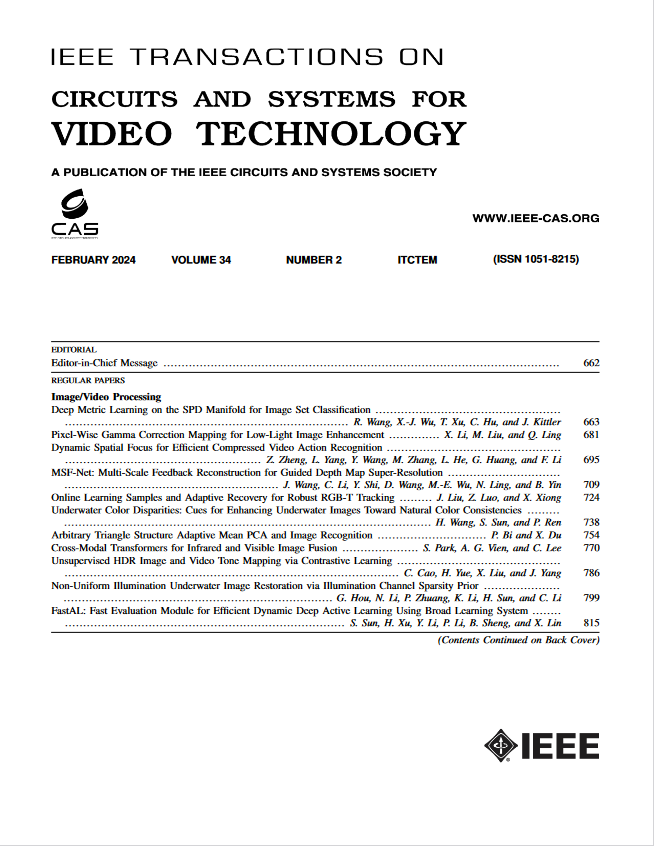Inter-Clip Feature Similarity Based Weakly Supervised Video Anomaly Detection via Multi-Scale Temporal MLP
IF 8.3
1区 工程技术
Q1 ENGINEERING, ELECTRICAL & ELECTRONIC
IEEE Transactions on Circuits and Systems for Video Technology
Pub Date : 2024-10-17
DOI:10.1109/TCSVT.2024.3482414
引用次数: 0
Abstract
The major paradigm of weakly supervised video anomaly detection (WSVAD) is treating it as a multiple instance learning (MIL) problem, with only video-level labels available for training. Due to the rarity and ambiguity of anomaly, the selection of potential abnormal training sample is the prime challenge for WSVAD. Considering the temporal relevance and length variation of anomaly events, how to integrate the temporal information is also a controversial topic in WSVAD area. To address forementioned problems, we propose a novel method named Inter-clip Feature Similarity based Video Anomaly Detection (IFS-VAD). In the proposed IFS-VAD, to make use of both the global and local temporal relation, a Multi-scale Temporal MLP (MT-MLP) is leveraged. To better capture the ambiguous abnormal instances in positive bags, we introduce a novel anomaly criterion based on the Inter-clip Feature Similarity (IFS). The proposed IFS criterion can assist in discerning anomaly, as an additional anomaly score in the prediction process of anomaly classifier. Extensive experiments show that IFS-VAD demonstrates state-of-the-art performance on ShanghaiTech with an AUC of 97.95%, UCF-Crime with an AUC of 86.57% and XD-Violence with an AP of 83.14%. Our code implementation is accessible at求助全文
约1分钟内获得全文
求助全文
来源期刊
CiteScore
13.80
自引率
27.40%
发文量
660
审稿时长
5 months
期刊介绍:
The IEEE Transactions on Circuits and Systems for Video Technology (TCSVT) is dedicated to covering all aspects of video technologies from a circuits and systems perspective. We encourage submissions of general, theoretical, and application-oriented papers related to image and video acquisition, representation, presentation, and display. Additionally, we welcome contributions in areas such as processing, filtering, and transforms; analysis and synthesis; learning and understanding; compression, transmission, communication, and networking; as well as storage, retrieval, indexing, and search. Furthermore, papers focusing on hardware and software design and implementation are highly valued. Join us in advancing the field of video technology through innovative research and insights.

 求助内容:
求助内容: 应助结果提醒方式:
应助结果提醒方式:


